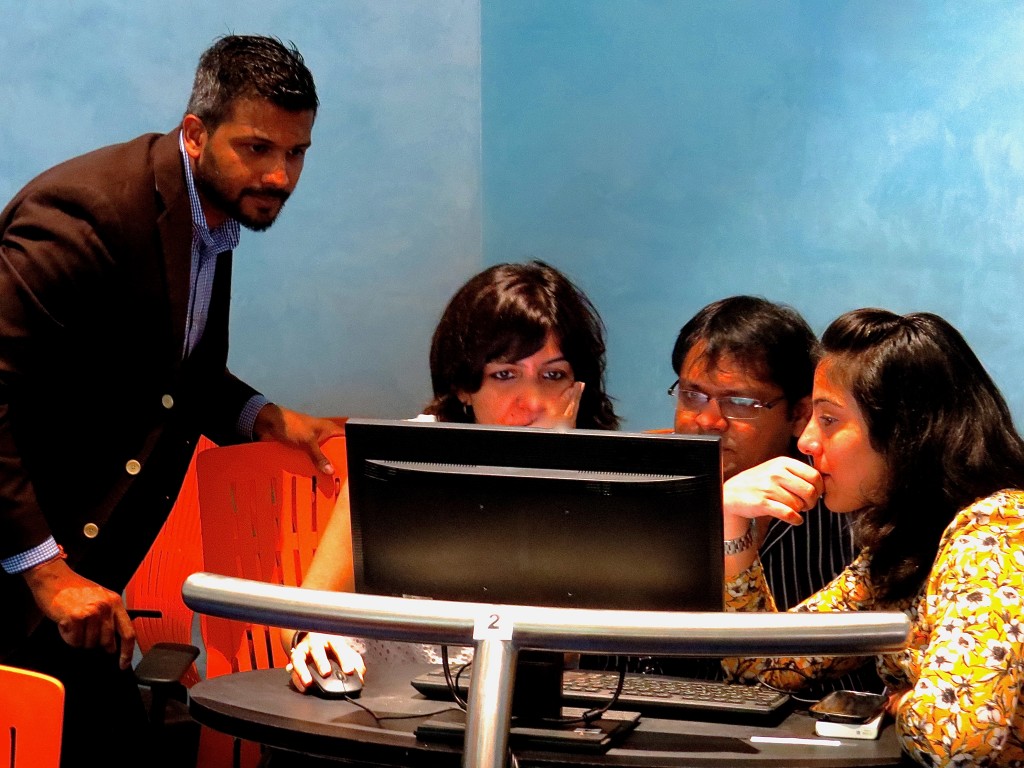Corporates make the big climb
By Arun Venkatraman, Asian Age. (Aug 8, 2015)
The simulation programme organised by the S P Jain School of Global Management for corporates at Lower Parel on Friday. 
Mount Everest is undoubtedly one of the most unforgiving places in the world. And that is something it has in common with the corporate world as well. Taking a page out of the challenges and critical scenarios that Everest presents, S P Jain School of Global Management recently presented teams from various corporate firms the opportunity to experience the big climb (or at least parts of it). Using a popular computer simulation, the two-hour-long programme puts participants in the shoes of mountain climbers gunning for the summit, to train them in critical decision making, calculated risks and most importantly team-play.
Pioneered by the Harvard University, the Everest Challenge is one of the most popular simulations utilised the world over by corporates and management schools. An intense ordeal even in the comfort of air-conditioned simulation rooms, the three teams — Bombay Chamber of Commerce and Industries, RIL and Burger King were presented real life challenges ranging from distribution of oxygen canisters to dealing with medical emergencies.
Telling us about the relevance of this simulation to the corporate environ, the simulation conductor and professor at SP Jain School of Management’s Dubai Campus, Dr Chris Abraham said, “The conditions during the Everest climb are often described with the acronym VUCA, which stands for Volatile, Uncertain, Complex and Ambiguous. But the same acronym also perfectly describes the corporate world. The simulation is designed in such a way that it assigns specific roles to members of the team such as an environmentalist, a photographer, a physician, marathoner and the leader. Each of them not only has specific individual goals but also they have a common goal of reaching the summit. This has many parallels to the corporate world and can teach the participants many lessons.”
Amit Dasgupta, the head of SP Jain Mumbai campus, said, “The Everest Challenge is one of the most popular among simulations. In 1996, an expedition team of 23 explorers conquered the summit. However, on the return journey, five of them died among whom two were some of the most experienced mountaineers in the world. So even in an experienced and well-qualified team, lack of critical decision-making and team synergy can lead to disasters. Which is what this simulation aims to teach participants.”
Divided into six rounds, the teams are presented a different challenge in each round with options to choose from. Y. Ramesh, HR manager at RIL and the leader of team two said, “The moment I learned that I was the leader, I tried to fit into the shoes of one immediately. The roles are assigned randomly and so anyone can be the leader, which is something that I learnt from this exercise. It gives you a very detailed understanding of the working of a team. Also, you only have a few minutes to settle before having to make important decisions, which teaches you about decision-making.”
Speaking about the chief takeaways from the simulation, another participant, Shweta Kakati from the Burger King team said, “The chief takeaway was collective decision-making. The decisions are mostly individual for the most part but to reach the collective goal they have to be made according to their merits.”




